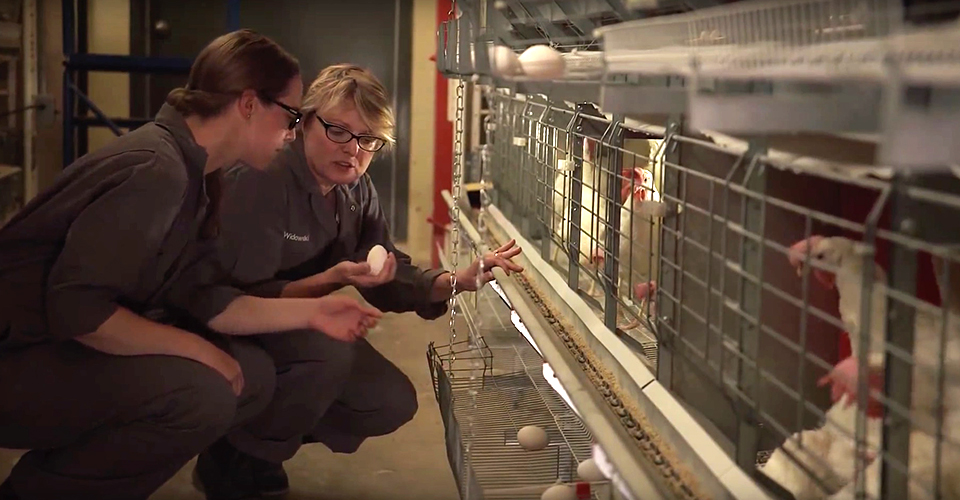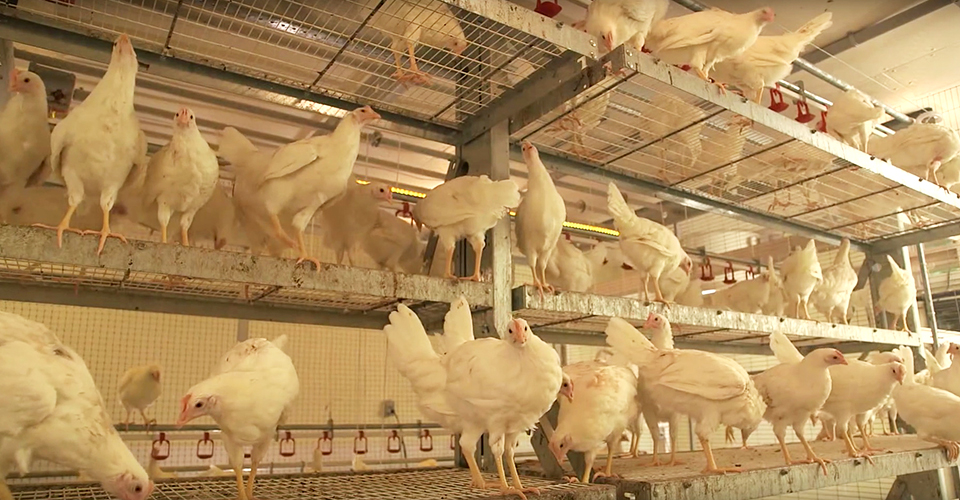
Peek behind the curtain of life as a hen
By Christine AnawatiHave you ever wondered how the phrase “pecking order” came to be? Wonder no longer. We spoke with Dr. Tina Widowski, a professor at the University of Guelph and the Egg Farmers of Canada Research Chair in Poultry Welfare to find out what it means and learn about the social behaviours of a hen.
The phrase “pecking order” first came to be by observing hens and their social hierarchies. This hierarchy is led by a bird Widowski calls the “boss hen”. She dominates use of amenities like water and nesting areas. This hierarchical role is especially important considering that hens tend to use many amenities in a short period of time. The boss enjoys pride of place, while other hens do their best to avoid the dominant hen. That’s why it’s so important to make sure hens have access to as many amenities as possible, so everything they need is always available.

So, what does a day in the life of a hen look like? “Everyone nests in the morning,” Dr. Widowski says, “and that process takes about an hour.” The hen searches for a spot to nest, sit and then lay their egg. After nesting, the hen typically feeds and enjoys a nice nap. The afternoon is filled with foraging and dust bathing. Then—you guessed it—another nap! Hens time their dinner right before the lights go down, after which it’s off to bed. “Hens are visual creatures so they aren’t very active in the dark,” notes Dr. Widowski. “A lot prefer to sleep on perches, a natural anti-predator behaviour from their time in the wild.”
In fact, many hen behaviours emerge from their pre-domestic ancestry. That includes perching, a tendency picked up from their direct ancestor the red jungle fowl. That understanding of hens’ ancestry is essential for researchers.
“We study comparisons between the red jungle fowl and the modern hen because it helps answers questions, like what does the modern hen need in its environment?” Compared to their ancestor, the hen has developed many interesting adaptations. For example, Dr. Widowski explains that today’s hen is an energy saver. “They reserve energy rather than wasting it and are less fearful than the red jungle fowl.”

Many questions remain about the behaviour of hens and researchers like Dr. Widowski are committed to furthering our understanding. For example, what exactly determines which hens are dominant? “It seems to be related to comb size,” says Dr. Widowski. “Comb size and a bright coloured comb is the sign of a healthy bird, and may be connected to their dominance.” But above all else, understanding the social behaviour of hens helps farmers keep their hens happy and healthy, thanks to the help of experts like Dr. Widowski.